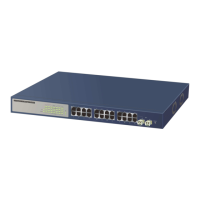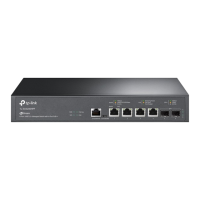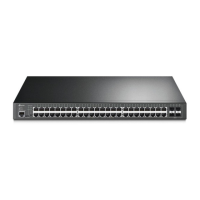Example
Enable the Loop Protect function for port 2:
TL-SG3424(config)# interface gigabitEthernet 1/0/2
TL-SG3424(config-if)# spanning-tree guard loop
spanning-tree guard root
Description
The spanning-tree guard root command is used to enable the Root Protect
function for a port. With the Root Protect function enabled, the root bridge will set
itself automatically as ERROR-PORT when receiving BPDU packets with higher
priority, in order to maintain the role of root ridge. To disable the Root Protect
function, please use no spanning-tree guard root command.
Syntax
spanning-tree guard root
no spanning-tree guard root
Command Mode
Interface Configuration Mode (interface gigabitEthernet / interface range
gigabitEthernet)
Example
Enable the Root Protect function for port 2:
TL-SG3424(config)# interface gigabitEthernet 1/0/2
TL-SG3424(config-if)# spanning-tree guard root
spanning-tree guard tc
Description
The spanning-tree guard tc command is used to enable the TC Protect of
Spanning Tree function for a port. To disable the TC Protect of Spanning Tree
function, please use no spanning-tree guard tc command. A switch removes
MAC address entries upon receiving TC-BPDUs. If a malicious user
continuously sends TC-BPDUs to a switch, the switch will be busy with removing
MAC address entries, which may decrease the performance and stability of the
network. With the Protect of Spanning Tree function enabled, you can configure
the number of TC-BPDUs in a required time, so as to avoid the process of
removing MAC addresses frequently.
202

